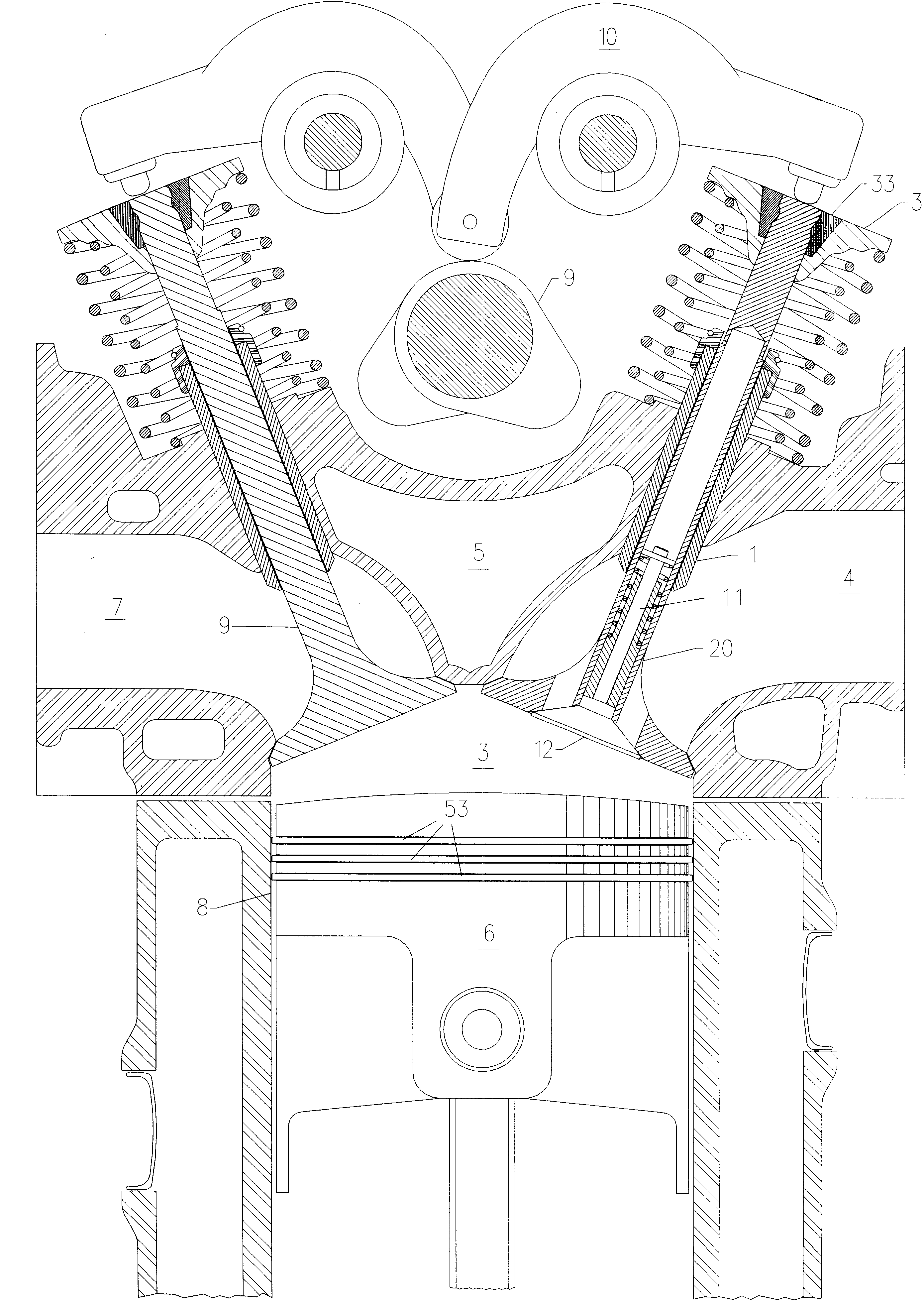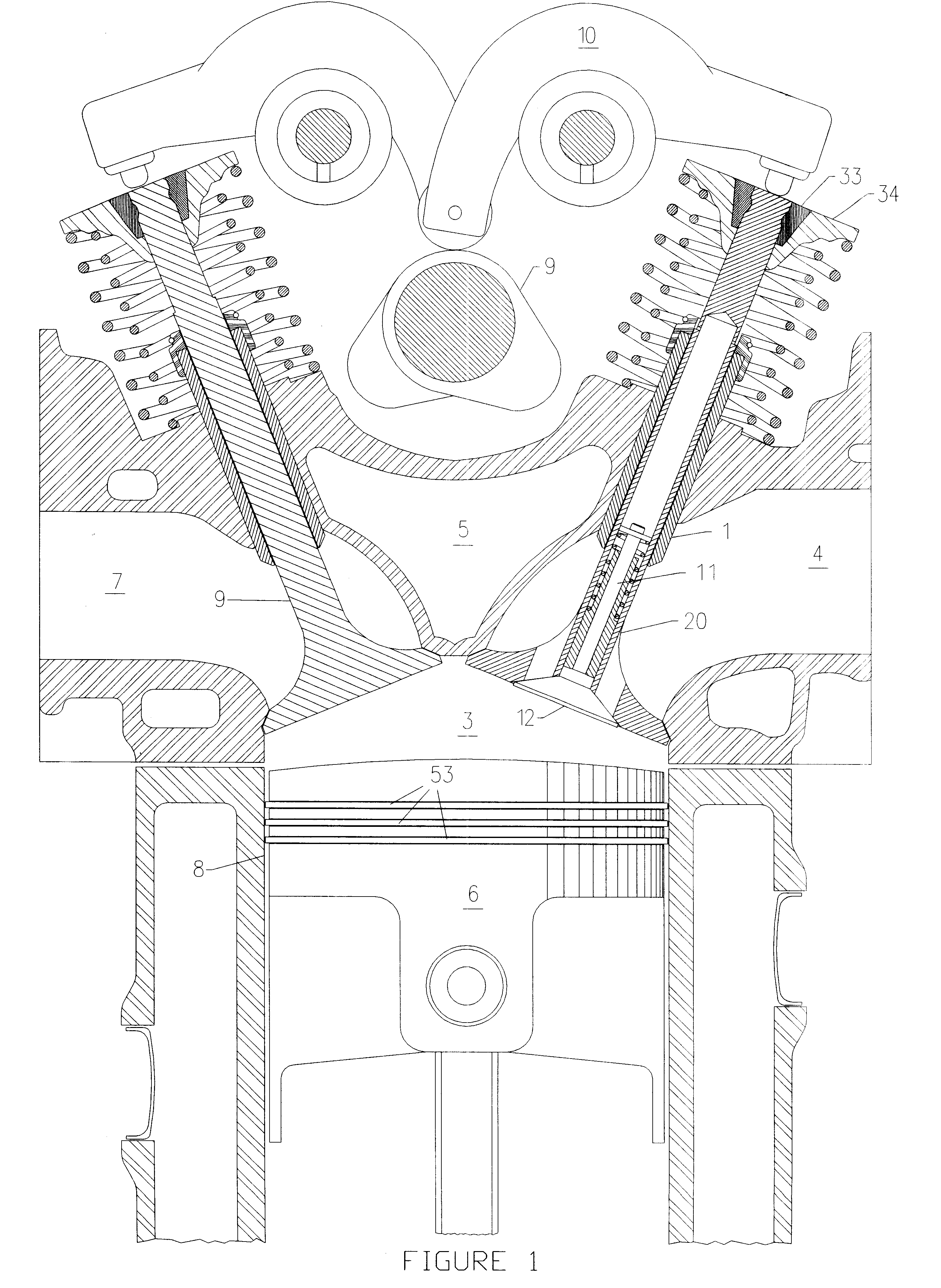Vented valve mechanism for internal combustion engines
a valve mechanism and internal combustion engine technology, applied in the direction of valve arrangement, slide valve, machine/engine, etc., can solve the problems of difficult automation of the entire assembly, adversely affecting the performance complicating the manufacture of the valve unit, so as to improve the flow dimension
- Summary
- Abstract
- Description
- Claims
- Application Information
AI Technical Summary
Benefits of technology
Problems solved by technology
Method used
Image
Examples
Embodiment Construction
As illustrated in FIG. 1, when both the intake and exhaust valve mechanisms are in a resting and fully closed position the intake part, #4, and the exhaust port, #7, are blocked from communication with the combustion chamber, #3, and a complete seal from combustion pressures created by the combustion process is facilitated.
As illustrated by FIG. 4, the inner valve, #11, is diminutive in size and mass, and can be constructed of a titanium material to further reduce its mass. This, in turn, allows the control springs(s), #41, to be small enough to be confined within the hollow portion of the outer valve stem, #31.
As depicted in FIGS. 2, 3, & 4, after the exhaust gases have been scavenged from the combustion chamber and the induction process begins the piston, FIG. 2-#6, begins to move rapidly down the cylinder, FIG. 2-#8, and is sealed against the cylinder by means of multiple rings, FIG. 2-#53. This creates a rapid pressure drop in the combustion chamber, FIG. 2-#3, which at a certai...
PUM
 Login to View More
Login to View More Abstract
Description
Claims
Application Information
 Login to View More
Login to View More - R&D
- Intellectual Property
- Life Sciences
- Materials
- Tech Scout
- Unparalleled Data Quality
- Higher Quality Content
- 60% Fewer Hallucinations
Browse by: Latest US Patents, China's latest patents, Technical Efficacy Thesaurus, Application Domain, Technology Topic, Popular Technical Reports.
© 2025 PatSnap. All rights reserved.Legal|Privacy policy|Modern Slavery Act Transparency Statement|Sitemap|About US| Contact US: help@patsnap.com



